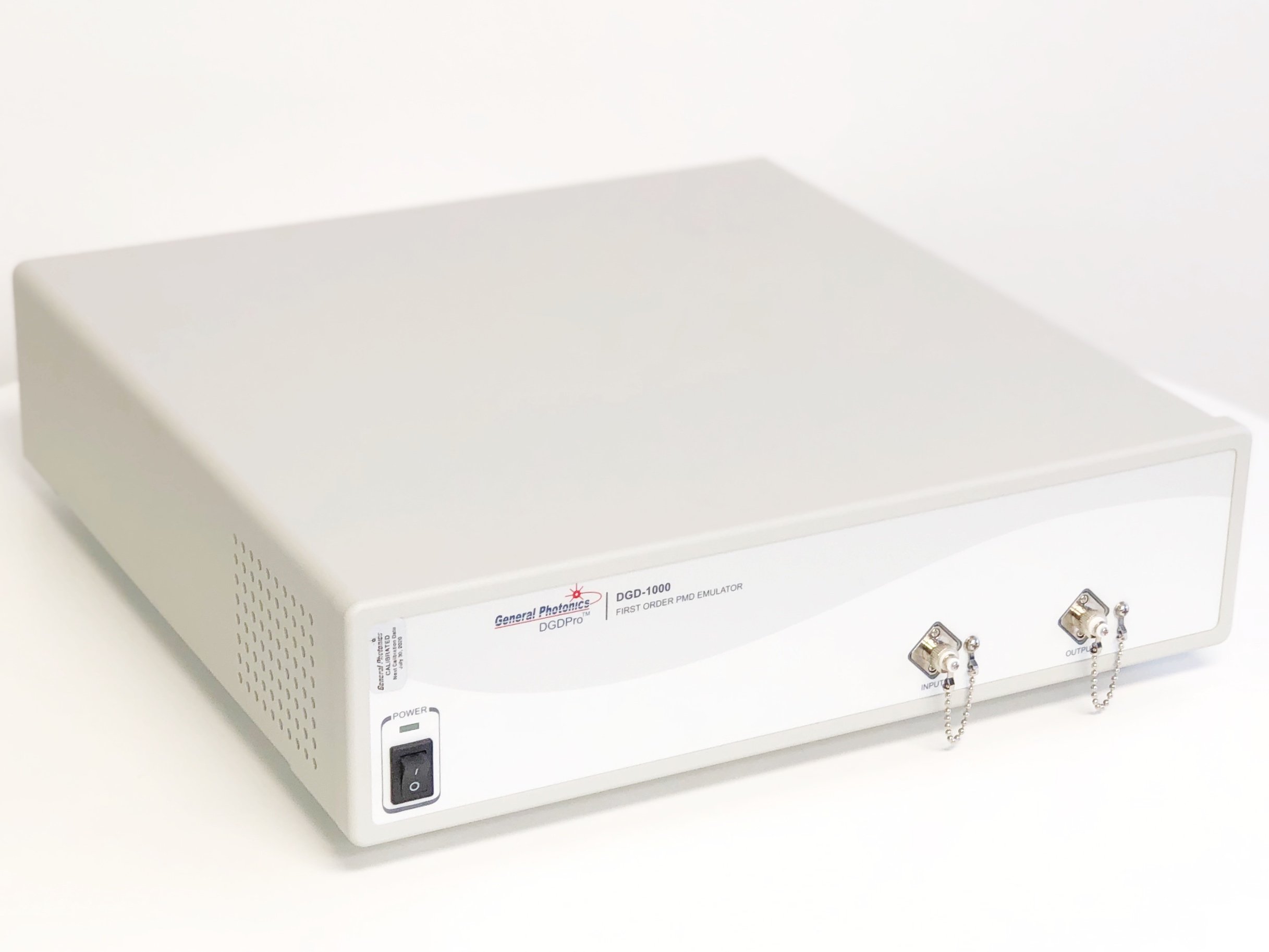Product information "OCA-1000 Optical Component Analyzer"
1260-1620 nm; 8-40 Channels; PDL Measurement Range 0-20 dB; PDL Resolution 0.01 dB; IL Measurement Range 0-60 dB; IL Resolution 0.002 dB; Optical Power Range -60-8 dBm; Optical Power Accuracy ±0.5 dB
General Photonics’ OCA-1000 is a multi-channel optical component analyzer that simultaneously measures insertion loss (IL), polarization dependent loss (PDL), and optical power (P) on multiple optical paths. The measurement is based on the Mueller Matrix method, which offers fast characterization of wavelength dependent optical parameters that are critical in today’s optical communication systems.
The OCA-1000 base model can have up to eight channels. Custom 8- or 16-channel expansion units can be added to increase the system capacity to up to 40 channels. The instrument comes with a control program with built-in functions to display measured power, IL, and PDL vs. wavelength or to monitor the time variation of power/IL for all channels simultaneously to determine their stability. For AWG characterization, the data analysis software also calculates passband center wavelength, bandwidth, and flatness as well as inter-channel crosstalk (from adjacent and nonadjacent channels).
The OCA-1000 optical component analyzer is an ideal solution for easy, accurate characterization of components and modules with multiple outputs, including DWDMs, ROADMs, AWGs and PLCs. It can be used with various tunable lasers , such as those from Keysight or Santec. This flexibility makes full use of existing laser resources and reduces the cost of making such measurements. Its rapid measurement reduces the time required to characterize devices with large numbers of ports, enabling higher production throughput.
Key Features:
- Wide Wavelength Range: 1260 to 1360 nm (O-Band), 1480 to 1620 nm (C- & L-Bands)
- Number of Channels: 8 to 40
- PDL Measurement Range: 0 to 20 dB
- High Polarization Dependent Loss (PDL) Accuracy: ±(0.02 + 2% of PDL) dB @PDL<10dB, ±(0.02 + 5% of PDL) dB @10<PDL<20dB
- PDL Resolution: 0.01 dB
- Insertion Loss (IL) Measurement Range: 0 to 55 dB, 0 to 60 dB
- IL Resolution: 0.002 dB
- Optical Power Range: -60 to 8 dBm
- Optical Power Accuracy: ±0.5 dB
- High Channel-to-channel Uniformity
- User-friendly Control Software
- Integration Time of Power Meter: 0.5 to 1,000 ms
- Dimensions: 19”-Rack-Mountable Enclosure, 1 U, 305 mm Depth
Applications: PDL or IL vs. Wavelength Measurement; IL or Power vs. Time Measurement; DWDM Component Passband Characterization: Center Frequency, BW, Ripple, Noise Floor; Fiber Optic Component Characterization; Network Component Characterization (e.g. DWDM, ROADM); Planar Lightwave Circuits (PLC); Photonic Integrated Circuits (PIC)











